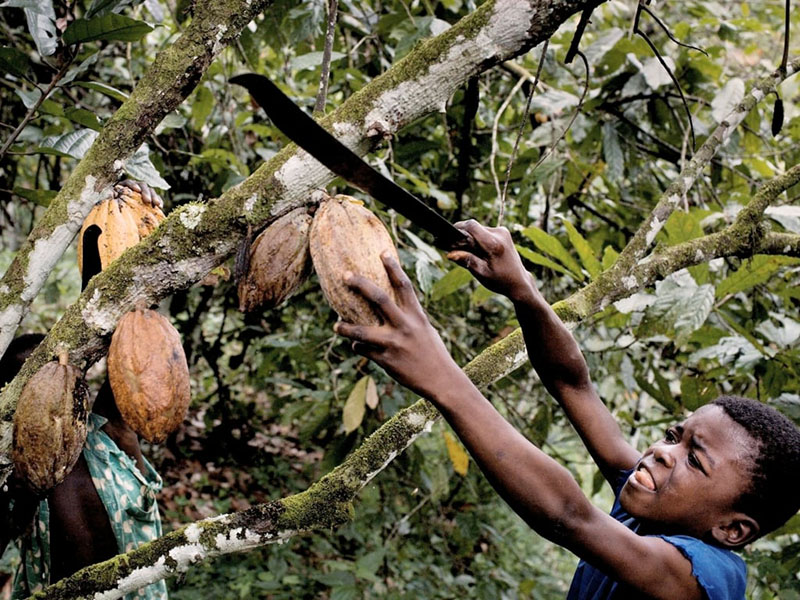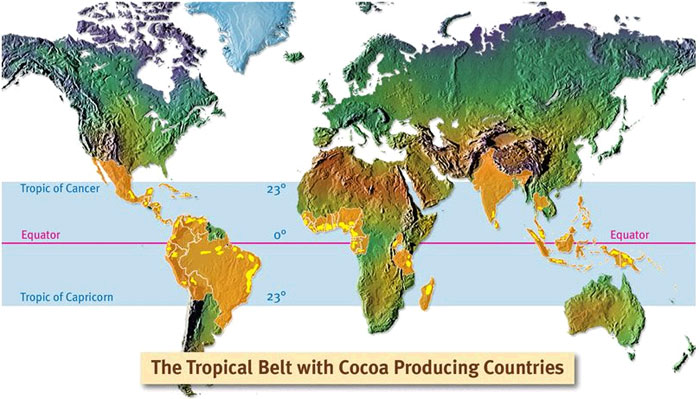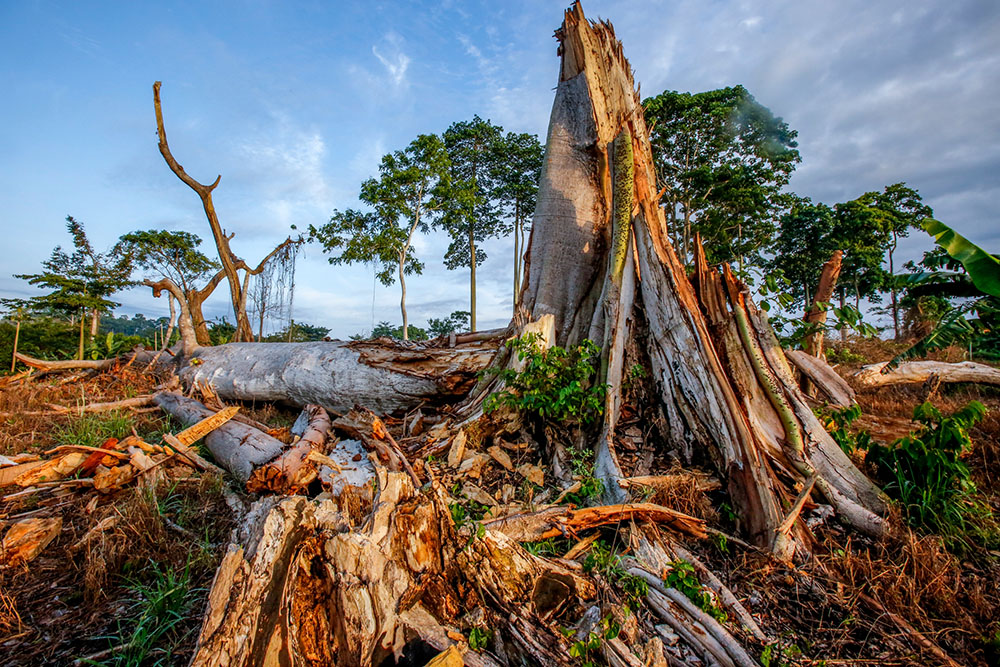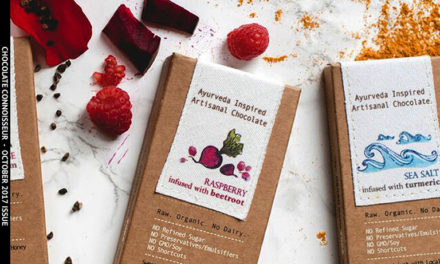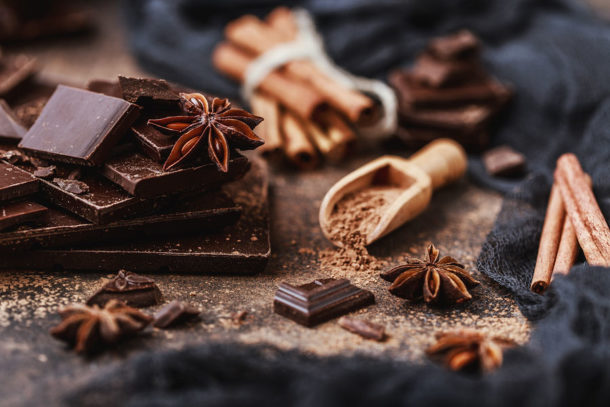Chocolate Connoisseurs – It’s Time to Unite
As chocolate lovers, we certainly place the cacao bean up on a food pedestal, and rightly so. Cacao shines through as one of the most complex substances known to mankind, while at the same time delivering a powerful dose of both healthy and delicious. Our beloved chocolate truly holds serve as one of the finest edible discoveries on Earth.
Such lofty expectations, however, often lead to a dark side, particularly when exposed to two of the uglier forces in human nature – greed and corruption. High quality chocolate makers and chocolatiers recognize the importance of combating this within the cacao supply chain, and today, before we delve into the serious problems before us in the chocolate world, let’s take a moment to discuss our role in all of this – the role of the chocolate consumer. Truth is, we play a much greater role than you may realize.
A sad fact in today’s modern “first world” is that greed and corruption (love of the almighty dollar if you will), walk hand-in-hand with our internal instinct for self preservation, and that marriage of sorts leads to more problems for humankind and the world around us than one would ever expect here in the 21st century.
We, as humans, are clearly failing in certain areas, and it’s largely the result of a serious disconnect at the places we purchase our food and drink – grocery stores, coffeehouses, restaurants…
If, when purchasing a chicken sandwich for example, you were first required to see the suffering that chicken endured at the hands of an unethical company, would you still buy the sandwich?
What if you needed to kill the chicken yourself? Could you do it?
And what if, in order to purchase an egg, you first needed to visit the cages where the chickens spent nearly their entire lives, barely able to move, certainly not treated with the respect and dignity that most of us would grant any living thing in our world today?
Here’s the hard truth – whether we see it or not, it all still happens. Whether you’re there for the suffering and the abuse and the subsequent killing for food, or whether you’re even aware whatsoever of the immoral efforts undertaken to deliver your food –
IT ALL STILL HAPPENS
If you’re a regular reader of Chocolate Connoisseur Magazine, you know I’m not one for writing in ALL CAPS, so when I do, there’s a very good. I’m not yelling of course with the caps lock frenzy, but I am making a sincerely serious point. If you’re a person who faces up to problems head on, or even if you tackle them from more of a quiet, behind-the-scenes angle, then you’re ready to go. If you’re simply someone who prefers to ignore anything outside of his or her own daily world, however, then understand, ignore as you will, but… it all still happens.
Whether you fight to make a difference or prefer to hide away from the truth, if you purchase something that stems from an incorrigible act, some responsibility for that act still sits in your hands. We’re an advanced society, but one that’s had its eyes opened to atrocities we never expected to see at this point in history. Once that happens, once the blinders are off, eyes open… you don’t close them. You open them wider. You march forward. You stop the atrocities in their tracks.
So make no mistake, it’s up to each one of us to make a difference. Every day. And with this two-part series on Corruption in the Chocolate Chain, I’m here to do what I do best – to give you an easy roadmap so that you can easily make that change yourself. Yes, every day.
Why? Because it’s not just chickens in America we’re egregiously abusing right now. It’s elephants in the Ivory Coast… it’s children in Ghana… and it’s all because of the way the world buys its chocolate. So get ready to dig deep and change the world together. Let’s do this!
The Two Glaring Problems with Africa’s Cacao
First off, as we’ve covered before, child labor and slavery still exist in the chocolate world, particularly in Africa’s Ivory Coast and Ghana. That’s problem number one. We won’t discuss it much here (although these two issues somewhat interconnect), but please read our article on Big Chocolate’s Ugly Secret in the January 2017 issue for more on that situation when you’re ready. We’d be remiss not to mention that straight away here, as it doesn’t get much uglier than child labor and slavery.
Today, however, we’re talking rainforests, specifically the trickle down consequences stemming from quick deforestation of said rainforests. A nonprofit project known as Mighty Earth (mightyearth.org) recently performed some serious investigative research on the ground in Africa, and we’ll be speaking largely to their data here.
Note: we’ll also mention this at the end of the article, but please take a moment when you’re done here to visit MightyEarth.org, download their detailed PDF report Chocolate’s Dark Secret, and show a little love! They deserve it!
We tend to romanticize parts of Africa, where safaris lead to nature’s finest… a chance to watch animals roam free within their natural habitats. Of course, that natural habitat often requires forest, a resource the Ivory Coast once held in abundance. Indeed, per Mighty Earth’s report –
“Much of Ivory Coast was densely covered by forests when it achieved independence in 1960, making it prime habitat for forest elephants and chimpanzees. Ivory Coast once boasted one of the highest rates of biodiversity in Africa, with thousands of endemic species. However, the chocolate industry’s sourcing practices have eliminated much of this forest.
According to Ivorian government statistics and maps, less than 11 percent of the country remains forested, and less than four percent remains densely forested.”
To be clear, the chocolate industry is not the only threat to Africa’s rainforests. It certainly plays a big part, however, and the numbers hit hard. With less than eleven percent of the country forested, at the current rate, the Ivory Coast likely won’t hold up for even twenty more years, while some estimates say all forest cover will be gone by 2030. Dire predictions, yes, but unfortunately realistic ones, if the map below, revealing the past twenty-five years of forest loss, offers any indication.
We can clearly see the problem, but why? Why cut down trees at such an alarming rate? What’s the driving force behind all the devastation?
Dangerous Corruption
You probably don’t need too many guesses. Money, “the root of all evil” as my grandma used to quote, drives the blades cutting down all the trees. Not just the money paid by chocolate companies for cacao, but also covert cash paid to officials and regulators so they’ll look the other way.
Much of the land in question sits under environmental protections – either as national park land or as protected forest, which of course means an explicit ban on deforestation.
That means hard and fast roadblocks, but unfortunately those roadblocks feel more like speed bumps in the Ivory Coast and Ghana, with national parks and protected forests paying the price.
After all, we’re talking prime real estate for growing cacao, since the world’s cacao belt stretches across only twenty degrees on the map. Enter an intense conflict of interest, particularly in a country where most cacao farmers can’t even afford to eat what they grow and sell, a sad irony to say the least. Money talks, at times even violently. Indeed, last month The Guardian reported this regarding the Ivory Coast –
“Privately, activists have been warned not to touch cocoa, the backbone of the country’s economy whose vertebrae reach the highest levels of society. Those who do can get in to serious trouble. In 2004 Guy-André Kieffer, a French-Canadian journalist working on a story about cocoa and corruption, disappeared. He is believed to have been killed.”
In spite of the potential threat, both The Guardian and Mighty Earth sent reporters across the Ivory Coast recently, documenting the dire situation up close, and quickly realizing that, for years on end, big chocolate companies have been purchasing cacao grown on illegally deforested lands. When you factor in the deforestation on unprotected lands as well, by no means illegal but still damaging to the forest cover, the map looks even more desperate.
It’s worst in the Ivory Coast, but they’re not alone. Per Mighty Earth –
“Many of Ivory Coast’s national parks and protected areas have been entirely or almost entirely cleared of forest and replaced with cocoa growing operations. In neighboring Ghana, the situation is similar: according to our analysis, 291,254 acres of protected areas were cleared between 2001 and 2014. In that same time, Ghana lost 7,000 square kilometers of forest, or about 10 percent of its entire tree cover; approximately one quarter of that deforestation was connected to the chocolate industry.”
The problem does not exist in a vacuum, however, and it’s not as if the governments of Ghana and the Ivory Coast are unaware of the illegal and harmful activity. So what’s happening here?
Regulation Without Enforcement
As Mighty Earth reports –
“The process of deforestation for cocoa starts with settlers who invade parks and other forested areas. These settlers then progressively clear the underbrush of forests by cutting down or burning existing trees… With the forests gone, the settlers then plant cocoa trees, which take years before they are ready for harvest.”
After the beans are harvested and dried –
“A first level of middlemen called “pisteurs” buy the cocoa beans from the settlers, transport it to villages and towns across the cocoa-growing region, and sell them onto another set of middlemen, known as cooperatives. The cooperatives then either directly or through a third set of middlemen bring the cocoa to the coastal ports of San Pedro and Abidjan, where it is sold to Olam, Cargill, and Barry Callebaut, who ship the cocoa to chocolate companies in Europe and North America.”
Note: This should help us all greatly appreciate the impact of bean-to-bar from a healthy supply chain standpoint!
The model followed in these two cacao-enriched countries of Africa can give you a chocolate headache. It’s also ripe for corruption. Mighty Earth discovered entire towns and villages on protected land, called campements. These illegal settlements can boast thousands and thousands of residents, “along with public schools, official health centers, mosques, churches, stores, and occasionally cell phone towers, in plain sight of government authorities.”
In a strange contrast with the disappearance of journalist Guy-André Kieffer back in 2004, here in recent times the conversations seem much more open and forthright. Mighty Earth found pisteurs and cooperatives alike, along with chocolate companies themselves, who were all completely open about the illegal activity underway.
“Cocoa traders and chocolate companies alike told us they were aware that significant amounts of the cocoa they purchase from Ivory Coast was likely illegally grown in protected areas.”
Sodefor, the forest development agency responsible for safeguarding protected forest lands, may be greatly contributing to the problem. As Mighty Earth uncovered, it’s an ugly situation –
“Many people we interviewed in Ivory Coast said that Sodefor is actively profiting from illegal deforestation. In the words of one farmer we interviewed in Goin Débé, ‘Sodefor comes and asks for money, and then if you give it, there is no problem. Sodefor just tells us to grow the cocoa a few meters away from the road so that the road looks forested.’”
As the nonprofit also reports, the Ivory Coast government isn’t faring much better –
“The government of Ivory Coast took action recently against cocoa-driven deforestation by expelling cocoa farmers from Mount Péko National Park (which means “mountain of hyenas” in the local Gueré language).
When we visited Mount Péko after the eviction, we found the park once again filled with cocoa smallholders who had returned. Some smallholders explained to us that when they finally returned to Mount Péko, they simply paid the authorities higher bribes to go back to cultivating their lands in the park.”
More Than Human
There are several reasons for protecting forests, which we won’t cover in their entirety here for brevity’s sake, but we must touch on one that’s very important to Africa – its unique wildlife, including the majestic and now endangered elephant. Deforestation destroys Ivory Coast elephant habitats, with truly devastating results. So much so that, according to Mighty Earth, “only 200-400 elephants remain from an original population of hundreds of thousands.”
Further research, from an Ohio State study, sheds more light on the dire situation –
“Chimpanzees are now found in just a few pockets throughout the nation and are considered an endangered species. The Ohio State study found that 13 of 23 Ivorian protected areas had lost their entire primate populations; in five areas, half the primate species had disappeared. Elephants, the country’s national symbol—plastered on every ‘Ivoire’ beer bottle and ‘Elephants’ soccer team jersey—are on the verge of total disappearance.
While poaching is a major part of the threat to elephants, cocoa-driven deforestation has pushed elephants into tiny corridors of forest, making them easier for poachers to track down and slaughter. Other animals in Ivory Coast are also threatened as they rapidly lose their last habitats, including pygmy hippos, flying squirrels, pangolins, leopards and crocodiles.”
All of a sudden, buying cheap chocolate holds much more weight than you’ve ever thought of before — a harsh reality, and one we most certainly must take action to change.
Big Chocolate’s Slow Response
Unfortunately, the first line of defense here, big chocolate, spent much of the past twenty-five years of deforestation simply turning a blind eye and stuffing their wallets. In March of 2017, however, a ray of hope emerged when Prince Charles hosted a meeting in London with dozens of chocolate companies.
Per an article at Financial Times, twelve companies, including Nestle, Mars, Mondelez, Cargill, Barry Callebaut, and Olam, signed an agreement to tackle deforestation by this November, when UN climate talks resume. Yes, deforestation can negatively affect climate change, as clearing forests releases dense carbon deposits into the atmosphere.
The Financial Times reported a very positive statement from Gerard Manley at Olam as well, where he said –
“The vast majority of cocoa grown by farmers over the past 30 years has been on land where the forest was destroyed to plant cocoa trees. By harnessing the collective powers of the governments, companies and NGOs, we can help protect and restore the forest landscape, which in turn will help protect the future of cocoa.”
Clearly acknowledging the problem is a big first step to resolution, but we’ve also seen big chocolate respond all too slowly before when it comes to issues affecting its supply chain. We’ll see what comes out of the November meetings. I will say, for the deforestation issue, nearly all big chocolate companies strongly pledge to fight the problem, with many promising to ensure their supply chains are deforestation-free within the next three to eight years.
Whether or not that’s simply rhetoric, only time will tell, but in the meantime, in part two of this two-part series next month, we’ll not only dig a little deeper, we’ll also deliver a clear roadmap for all of us to help make a difference on this issue, not in three to eight years, but immediately.
REFERENCES
http://www.mightyearth.org/wp-content/uploads/2017/09/chocolates_dark_secret_english_web.pdf
https://www.theguardian.com/environment/2017/sep/13/chocolate-industry-drives-rainforest-disaster-in-ivory-coast
http://www.mightyearth.org/chocolatesdarksecret
http://www.mightyearth.org/six-maps-explain-ivory-coast-cocoa-crisis/
https://www.ft.com/content/69cba48c-0a1a-11e7-97d1-5e720a26771b



